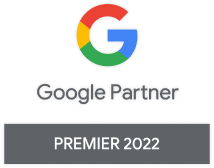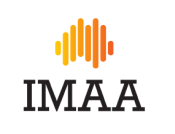What QR codes are and how to use them.
What QR codes are and how to use them.
QR codes are those funky little black and white squares that you've probably seen around town, especially in recent years (those endless check-ins). They're like a digital shortcut that your customers can scan with their smartphones to quickly and easily access information about your business, products, and services.
With our 100% free QR code generator, you can create custom QR codes that link to your website, social media pages, online menu, or even a special promotion.

Not only are QR codes a great way to boost engagement and break through the monotony of traditional marketing, but they're also super fun to incorporate into your business, hence why so many businesses are starting to make them. Use them on your business cards, flyers, menu, or even your storefront window. The possibilities are endless! /p>
Don't miss out on this awesome marketing opportunity - try our QR code generator today and see how it can revolutionize the way you connect with your customers.

QR codes as a beneficial marketing tool
There are a lot of businesses who are already seeing major benefits (and ROI) to utilizing dynamic and static QR codes to reach their customers. Bottom line, if you’re not doing it and your competitors are, you’re potentially losing revenue as a result.
So if you’ve been considering implementing static and/or dynamic QR codes into your marketing approach, it’s never been a better time to do so because the advantages are plentiful.
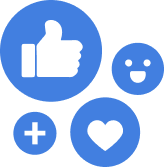
Increase customer engagement
QR codes have become an essential marketing tool for businesses of all sizes. By incorporating these codes into your marketing strategy, you can significantly increase your engagement opportunities, enabling you to connect with customers in exciting new ways.
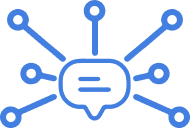
Easy cross-channel marketing
QR codes allow for cross-channel messaging, so you can use them on physical and digital materials such as flyers, posters, brochures, and social media profiles. This approach not only reinforces your brand messaging but also provides a seamless experience for your customers.

Minimize error correction levels
QR codes can also reduce the potential for user error. With one scan, customers can quickly access information without the need for typing in URLs or searching for the information manually. This makes it easier for customers to engage with your business, reducing the risk of frustration that may cause them to give up on the process. We all want things to be easier for our customers when it comes to buying our products. QR codes are another way to simplify that process.
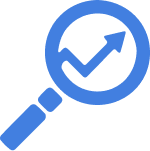
Gain audience insights
Additionally, QR codes can track important data, such as the number of scans, the time and date of each scan, and the location of the scan. This allows you to measure the effectiveness of your marketing campaigns, identify trends, and make informed decisions about future marketing strategies. This extra insight means you have more control over your campaigns and an increased ability to adapt to trends in customer behaviour in relation to your business and it’s products.

Continue your story
Ultimately, using QR codes as a marketing tool allows for the expansion of your communication capacity. With the ability to link directly to your website, social media platforms, or other online content, QR codes provide a seamless transition between online and offline communication channels. This makes it easier for customers to engage with your brand and access important information about your products or services. QR codes can also be used to provide exclusive content, such as discounts or promotions, that are only accessible through the use of the code. This creates a sense of exclusivity and urgency for customers, which can increase brand loyalty and drive sales.
All in all, the benefits of using QR codes as a marketing tool cannot be overstated. They offer a unique and engaging way to connect with customers, increase brand awareness, and drive sales. By utilizing the various features of QR codes, such as cross-channel messaging and data tracking, businesses can optimize their marketing efforts and see a significant return on investment. So why not give QR codes a try and see how they can take your marketing efforts to the next level?
Using our powerful free generator to create QR codes.

Let us help you take advantage of the benefits of QR codes with our free QR code generator! It's easy to get started, but we’ve made it even easier.
Step 1Scroll to the very top of this page where you’ll see the tool and all its functions.
Step 2Determine the type of new QR code you want to create. Our tool can generate all kinds of different QR codes (email, location, link, phone, SMS, Wi-Fi and more), but for brevity’s sake we’ll run through a link as it’s the most common QR code for businesses.
Step 3Type in or paste the link you want the QR code to lead to in the ‘Link’ field.
Step 4Review each of the graphic formats/rendering options as presented and make appropriate changes wherever necessary.
Step 5As it will be marketing material for commercial usage, we recommend using your company logo. You can do this by clicking the ‘Logo’ icon under the Watermark heading in the options.
Step 6Click the ‘Generate QR Code’ button if it hasn’t generated automatically already.
Step 7The QR code generator will display your unique print quality QR code design which you can then save and use as you wish as a marketing asset.

QR Code Generator Tool
FAQs
QR CODES: WHAT ARE THEY?
A QR code (short for Quick Response code) is a two-dimensional barcode that can be read by a smartphone camera or QR code scanner. It contains information such as a website URL, text, or other data and is often used to provide quick and easy access to content or to track and identify products.
HOW ARE QR CODES SCANNED?
To scan a QR code, you need a smartphone with a camera and a QR code reader app. Most smartphones come with a pre-installed QR code reader, or you can download one for free from your app store.
Once you have the app, simply open it and point your camera at the QR code. The app will automatically scan the code and provide you with the relevant information or take you to a website.
It’s quick and easy, making QR codes a convenient tool for businesses to reach their audience.
WHEN WERE QR CODES INVENTED?
In 1994, Masahiro Hara, an employee of Japanese company Denso Wave, invented QR codes. Initially, Hara developed them to track vehicles and parts during the manufacturing process by using high-speed component scanning.
WHAT CAN I INCLUDE IN A QR CODE?
A QR code can store various types of information, including website URLs, contact information, email addresses, phone numbers, text messages, social media profiles, and more.
The type and amount of information that can be stored in a QR code depend on its size and complexity. For instance, a smaller QR code can hold less data, while a larger QR code can store more. Businesses can use QR codes to provide customers with more information about their products, services, and promotions, as well as to enable mobile payments, loyalty programs, and other types of interactions.
QR codes are a versatile and effective marketing tool that can help businesses engage with their audience in new and innovative ways.
IS THERE A DIFFERENCE BETWEEN QR CODES AND BARCODES?
QR codes differ from standard (linear) barcodes in a few ways. First and foremost, QR codes are two-dimensional, whereas standard barcodes are one-dimensional. This means that QR codes can hold a lot more information than linear barcodes.
Additionally, QR codes can be read from any angle, whereas standard barcodes must be read from a specific orientation. QR codes can also be scanned using a smartphone camera, whereas standard barcodes typically require a dedicated barcode scanner.
Finally, QR codes have error correction capabilities, which means that even if part of the code is damaged or obscured, it can still be read and decoded correctly.
HOW DO QR CODES BENEFIT THE GROWTH OF MY BUSINESS?
QR codes can be an effective marketing tool that can help your business grow in many ways. Here are some ways that QR codes can benefit your business:
- Increased engagement opportunities: QR codes can provide a quick and easy way for customers to access information about your products or services. By scanning a QR code, customers can be directed to a landing page that provides them with additional details, videos, or special promotions.
- Enables cross-channel messaging: QR codes can be used to link to social media pages, online reviews, or feedback forms, which can help businesses create a more cohesive and integrated online presence.
- Reduces potential of user error: QR codes eliminate the risk of typos when entering URLs or other information, making it easier for customers to access the content you want them to see.
- Allows for the tracking of important data: By using QR codes, businesses can track how many people have scanned their codes, where the scans originated from, and what time of day they were scanned. This data can be used to refine marketing efforts and better target specific customer demographics.
- Expands your communication capacity: QR codes can also be used to communicate with customers in new and creative ways. For example, businesses can use QR codes to create scavenger hunts, promotional contests, or to deliver coupons or special offers.
Overall, QR codes can provide businesses with a cost-effective and efficient way to reach customers and grow their business. By incorporating QR codes into your marketing strategy, you can increase engagement, streamline communication, and gather valuable data to help you make more informed decisions about your business.
WHERE CAN QR CODES BE USED?
QR codes can be used in various places to engage and communicate with customers. Here are some of the places where QR codes can be used effectively:
- Product packaging: QR codes can be added to product packaging to provide customers with more information about the product, such as its ingredients, origin, or how to use it.
- Business cards: Including a QR code on your business card can give people quick access to your website, social media profiles, or contact information.
- Flyers and posters: QR codes can be added to promotional materials to provide more information about the product or service being advertised, or to direct people to a specific landing page.
- Storefronts: QR codes can be placed on storefronts to direct customers to your website or social media profiles, or to provide them with special offers or promotions.
- Menus: QR codes can be added to menus to provide customers with more information about the food, such as its nutritional value or allergen information.
- Event tickets: QR codes can be added to event tickets to streamline the check-in process and reduce wait times.
- In-store displays: QR codes can be added to in-store displays to provide customers with more information about the products being showcased or to direct them to a specific landing page.
Overall, QR codes can be used in a variety of creative ways to engage with customers and provide them with valuable information, ultimately helping to grow your business.
HOW DO I MAKE ONE?
Looking to create your own QR code quickly and easily? Look no further than our user-friendly QR code generator at the top of this page. In just a few clicks, you can create a custom QR code that is uniquely generated for your business. Whether you want to use it on business cards, flyers, or other marketing materials, our generator makes it simple to create high-quality code that can be scanned by any smartphone camera. Try it out today and see how easy it is to incorporate QR codes into your marketing strategy.

